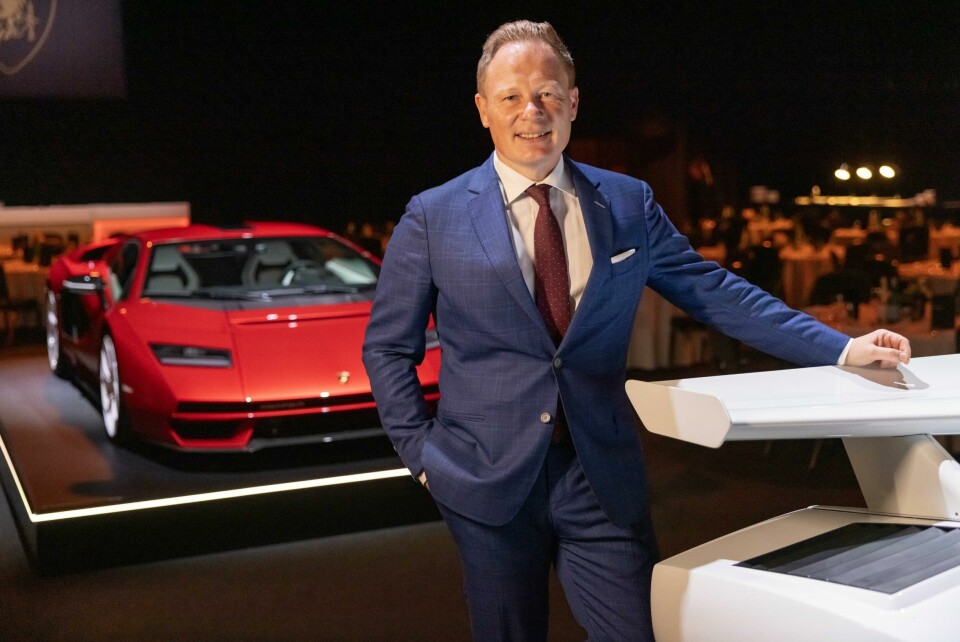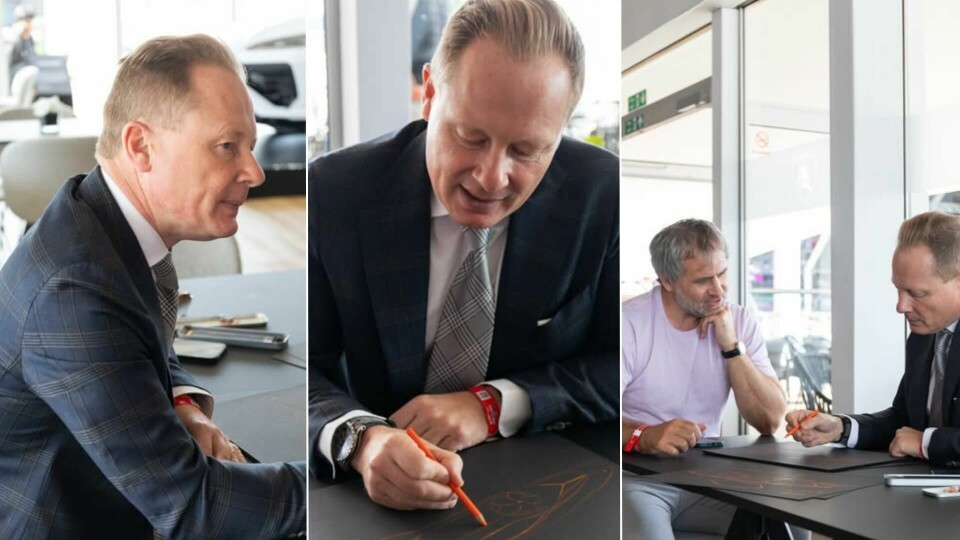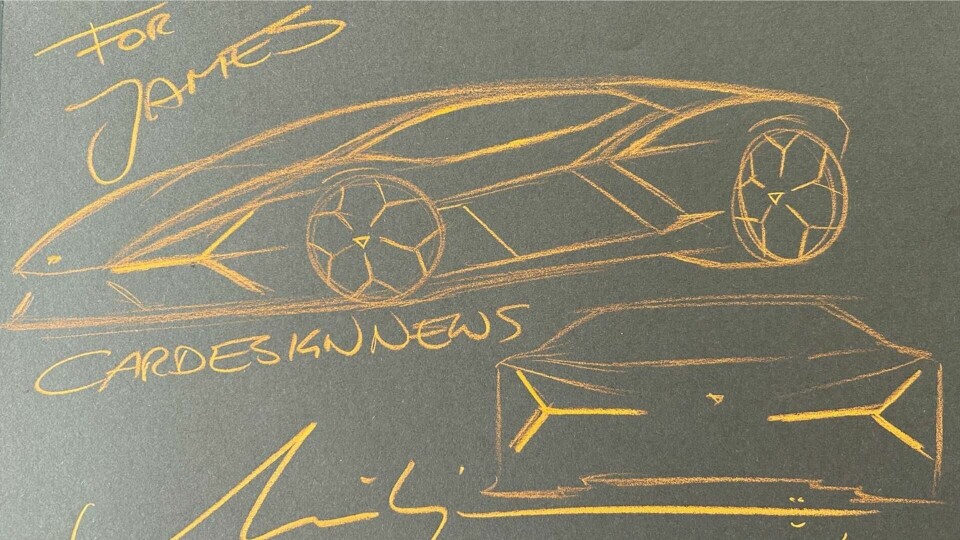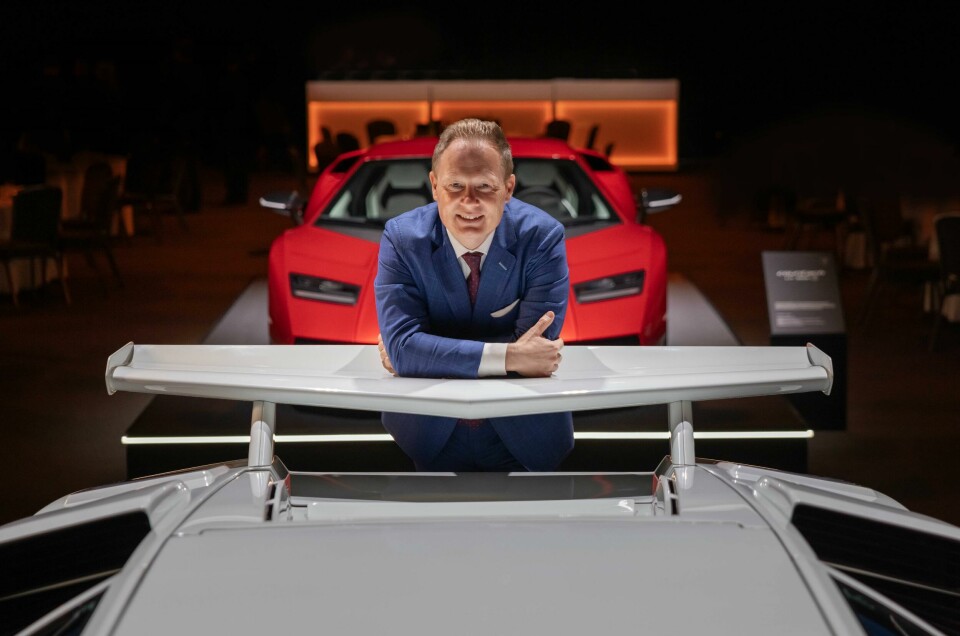
Mitja Borkert: “Sketching breathes air into the lungs of designers”
As part of Car Design News’ April focus on sketching, we speak to Mitja Borkert, design director at Lamborghini, on why the pen and paper will never die
Welcome to the first interview in Car Design News’ April Focus on sketching – arguably the most essential skill in a car designer’s arsenal.
Sure, we live in an era of VR, AI, and 3D modelling wizardry (as covered in our February focus: Digital Tools), but let’s not get ahead of ourselves. Before the polygons, before the renders, before the wind tunnel tests – there’s the sketch.
And no one understands that better than Mitja Borkert, Lamborghini’s design boss and a man who still sees sketching as the soul of automotive creativity.

For Borkert, sketching isn’t just a nostalgic throwback to an analogue age – it’s a necessity. “Sketching is like breathing air into the lungs of a designer,” he said. “To me, it’s an everyday thing. The direct connection between my brain, my wishes, my desire to create the future—it’s the fastest way to see that.”
In other words, the act of sketching is more than just an initial step; it’s a designer’s thought process made visible, a direct line from inspiration to execution. Forget the metaverse – this is where real-world ideas take their first breath.
Of course, the design process has evolved. Digital tools have exploded in capability, allowing designers to move seamlessly from sketching to fully realised 3D models.
“When we meet up about the projects, we see sketches as renderings, and sometimes they’re already three-dimensional using software,” Borkert noted. “There’s just no limit to it.”
But for all this technological firepower, sketching remains a fundamental skill. Borkert is adamant: “I couldn’t substitute sketching. To me, it remains like writing a new story.”

And what a story it tells. Borkert spoke with reverence about the sketches of the legendary Walter de Silva and current Ferrari design chief Flavio Manzoni, or the early work of Style Porsche under Harm Lagaay and Michael Mauer. He quickly pointed out that, back in the day, a single sketch could win a design competition and define the next big project.
If that sounds dramatic, that’s because it is. A genuinely great sketch captures the essence of a car in a way that no computer-generated model can replicate. It’s an act of persuasion, a battle cry, a vision distilled into a few confident strokes.
But what about the rise of AI-generated designs? Should young designers be worried that their sketchbooks will be replaced by an algorithm? Borkert doesn’t sugarcoat it: “It’s definitely a threat for young designers coming from universities now. But design leads like me still favour the classical approach.”
A good sketch remains a good sketch. You need to learn and practice it, just like playing an instrument or being good at a sport
Why? Because sketching isn’t just about producing an image – it’s about understanding form, volume, and proportion. “Only then do you really understand how you generate the three-dimensional shape of what you want to create,” he added.
This brings us to an interesting question: has technology democratised sketching? After all, software can now clean up wobbly lines, generate perspective grids, and even auto-fill lighting effects.
But Borkert remained firm – talent still matters. “A good sketch remains a good sketch. You need to learn and practice it, just like playing an instrument or being good at a sport. Design is tough competition, and there are incredibly skilled designers worldwide. You always need to remember that.”
The tools may have changed, but the game remains the same: only the best rise to the top.
So, what makes a great car design sketch? It’s not just about drawing a sleek shape or getting the proportions right. “It’s about the perspective, the easiness of the lines, being original – not copying something – and the general feeling of a sketch,” Borkert explained.
He recalled being awestruck by Grant Larson’s sketches for the Porsche Boxster Concept in 1993. “They were so easy-going and captured the essence of the upcoming car perfectly.”
Pen and paper remain an effective and efficient tool
He also credited his university mentors, Stephan Stark and Raphael Zammit, for instilling in him the importance of effortless, confident sketching. “They could sketch as easily as breathing,” he said. “That was fascinating to me, and I always wanted to catch up.” Even now, as a seasoned design leader, he refuses to stop sketching. “I definitely want to make a competitive sketch.”
Looking ahead, will sketching still hold its place in the industry? Borkert has no doubts.
“Pen and paper remain an effective and efficient tool. With a photocopy machine, you’re unbeatable even today.” But he also acknowledged that the game has changed.

“Young designers need to be able to immediately work in Photoshop and translate their ideas into 3D with Alias or Blender.” That said, there’s still one crucial test for spotting raw talent: “I can always tell if a young designer truly understood their idea by looking at their sketch.”
There’s a reason why sketching remains the heartbeat of car design – it’s raw, immediate, and deeply personal. The best sketches visualise an idea as well as communicate passion, vision, and intent. In a world of digital precision, it’s the messy, expressive energy of a great hand-drawn sketch that still carries the most weight.
So, whether you’re wielding a stylus or an old-school ballpoint, one truth remains: the ability to sketch well remains an invaluable skill in car design.







